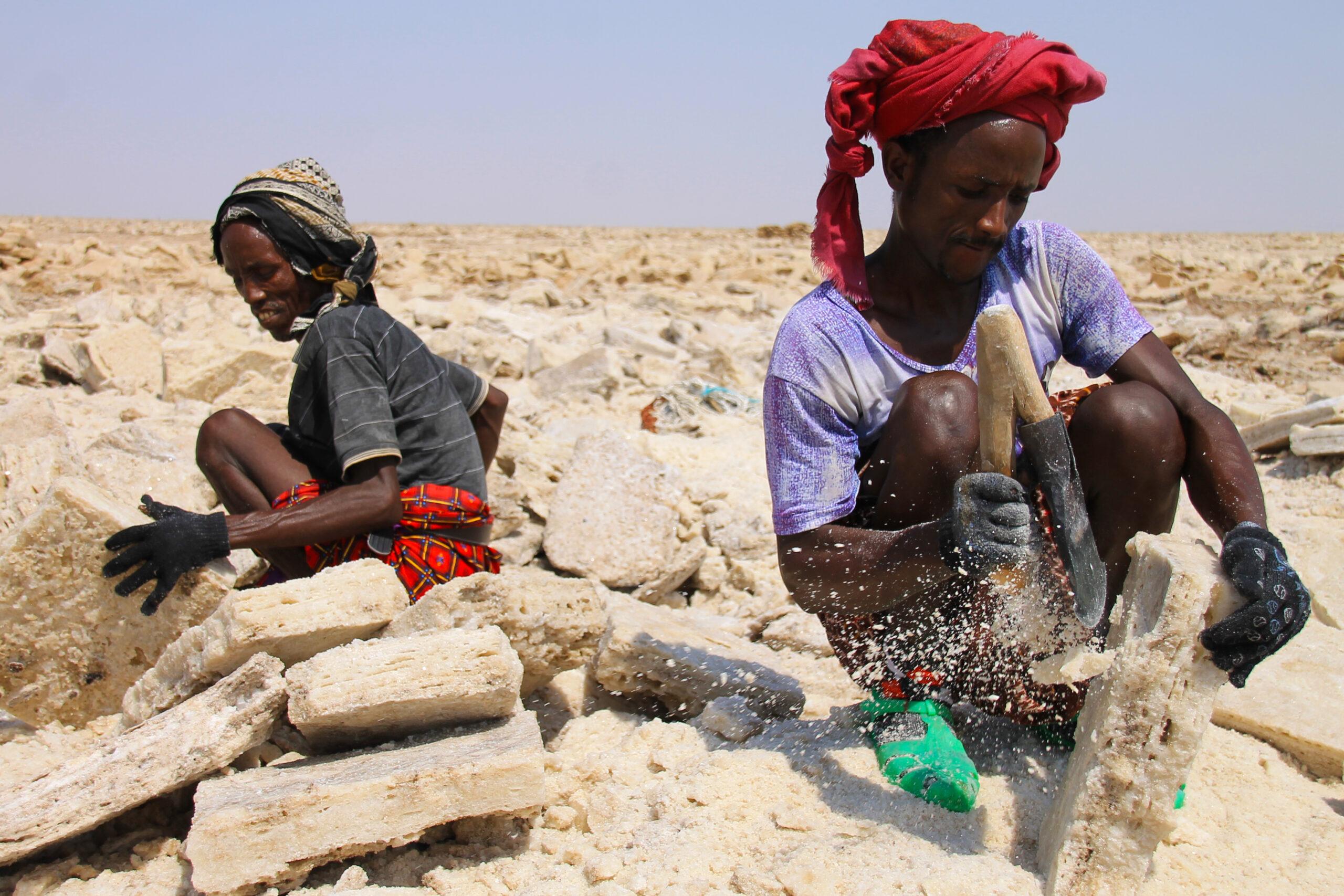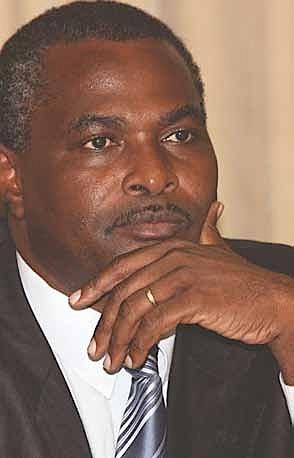
Debating Ideas is a new section that aims to reflect the values and editorial ethos of the African Arguments book series, publishing engaged, often radical, scholarship, original and activist writing from within the African continent and beyond. It will offer debates and engagements, contexts and controversies, and reviews and responses flowing from the African Arguments books.

Workers in Ethiopia. Credit: David Meffe
The bulk of news and reporting about the war in Ethiopia is difficult to navigate. As much as the war is with bullets and lives, it has also been with words and media. I have come across a scholar and a journalist recently, even a year after the start of the war, asking what to read and how to understand the complex situation. The ‘international’ media has continued with the ‘good guy-bad guy’ narrative or hero and villain simplistic framings. ‘International’ experts are not that helpful either with dichotomous ‘victim’ versus ‘perpetrator’ analyses which mostly reflect a lack of nuanced understanding, withheld bias and/or political activism disguised as ‘expertise’. Social media is even more rampant. While Twitter has recently temporarily disabled Trends in Ethiopia, Facebook also ‘between May and October 2021 took action on more than 92,000 pieces of content in Ethiopia’, actions which again become centre of debate with regards to timing and bias. Whistle-blower Frances Haugen and the Facebook Papers also attest to how Facebook has been instrumental in violence in Ethiopia.
Navigating the multi-layered complexity of the war is like Sem ena Woriq (literally, Wax and Gold), an Ethiopian literary knowledge system of cryptic way of communicating. In poetic or prose writing, speech or even lyrics, the Sem (Wax), represents the obvious and apparent meaning, the one directly visible. The Woriq (Gold), on the other hand, represents the hidden message, the most valuable and key to understanding the message being relayed. Just as the keyword or phrase in Sem ena Woriq comes as a cipher with multiple meanings, the war in Ethiopia also has layered meanings. This multi-layered complexity of the war has been instrumentalized by many to obscure meaning, draw attention to some elements while silencing others. This short piece offers a discussion for those that seek a starting point to untangle the web. Learning from the 1990s transition that brought about the reconstitution of Ethiopia as a federation of various regions, I argue that any attempt to bring a lasting settlement to the current political crisis in Ethiopia should address both the Wax and the Gold layers of the problem that currently manifest as war.
The apparent, directly visible layer of the war has been widely mis/reported over the past year. A simple Google search for news items with ‘Ethiopia, Tigray, War’ as keywords for the past year gives 31,100 results. Although these reports largely focus on events of the last year, Ethiopia has been in peril since popular protests erupted against the government around 2014. The breakthrough that came in 2018 when the TPLF[1] dominated EPRDF government was forced to hand over power did not last long. High hopes and great expectations of this transition were shattered when the falling out between the formerly dominant TPLF and the rest of the EPRDF coalition culminated in armed conflict this time last year.
The organization of and mobilization for political power along ethnic lines is central in explaining the falling out between the different parties within the EPRDF coalition. The institutionalization of ethnic-based federalism since the early 1990s has also contributed to the increasing animosity of various ethnic groups. This mistrust and tension have allowed the TPLF (representing a minority in the federation) to effectively dominate the country’s political economy for about three decades. This has been described by many (including by a founding member of TPLF) as a divide and rule strategy that effectively halted configuration of political alliance across ethnic lines, especially between the two largest ones (i.e. the Oromo and the Amhara). Failure to reach consensus in the post-2018 transition between the TPLF and the rest of the EPRDF coalition meant escalated tension between the Tigray regional government under the TPLF and the Federal government under a newly rebranded Prosperity Party. The post-2018 period has also seen rampant ethnic violence throughout the country, which, according to the Federal government, is the malicious work of the embittered TPLF. Added to this is the geopolitical tension arising from the dam construction on the river Nile which is considered a threat by Sudan and Egypt. Instability in the Horn of Africa region also means threat/opportunity for global powers aspiring to achieve strategic control over the Red Sea region.
Beneath all this widely mis/reported violence and instability lies the obscured ‘Gold’, the hidden layer, that is the war for/against the ‘spirit’ of Ethiopia. The idea of Ethiopia as a state, the notion of Ethiopiawinet, or being an Ethiopian, has been under scrutiny particularly since the days of the student movement of the 1960s that gave rise to political groups including TPLF. The antithesis of Ethiopiawinet, i.e., the primacy of ethnic identity over the blanket national or supranational Ethiopiawinet, has gained prominence over the decades. Many agree that one fundamental problem of the reconstituted federal system of Ethiopia in the past decades has been its hostility towards Ethiopiawinet and intolerance towards political groups that uphold the notion.
Acknowledgement and promise to rectify this flaw in the political system was one of the biggest sources of widespread acceptance enjoyed by Prime Minister Abiy in 2018. This, for TPLF and other political groups that are antithetical to Ethiopiawinet, has become a threat. Despite lack of consensus over what Ethiopiawinet constitutes amongst its proponents and critics, the current war has an inherent relational meaning to the notion. For instance, different ethnic-based political groups that aligned together to overthrow the TPLF domination in the pre-2018 period have now realigned themselves differently in the current war. The TPLF has also formed a coalition with groups that it used to label and persecute as terrorists. This (re)alignment of political forces has mainly to do with the notion and meaning of what Ethiopia means for the two sides at war. Beyond shaping the domestic configuration of political groups during this war, Ethiopiawinet has also become instrumental for many that are highly critical of the West’s misguided policy and increasingly interventionist approach.
The two layers of meaning we find in the current war are not located in distinctly separate realms. As the cipher word or phrase in Sem ena Woriq, they exist together and at the same time have different layers of meaning. Any attempt to resolve the current war and political failure needs to address both layers of this complex problem. The early 1990s transition period and its outcome must serve as a lesson that ‘victor’s justice’ is only a temporary settlement that will haunt us back through time.
End Note
[1]Tigray People Liberation Front (TPLF) is one of the four parties under the Ethiopia Peoples Revolutionary Democratic Front (EPRDF) coalition that came to power after the fall of the previous Dergue regime in 1991.





